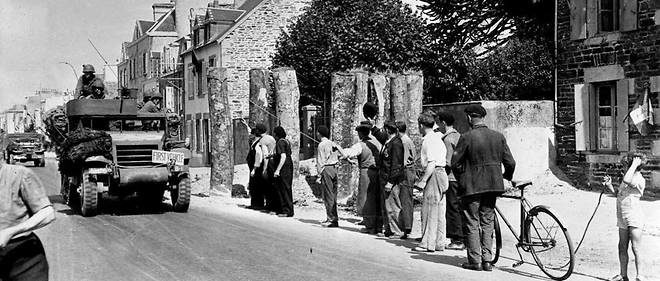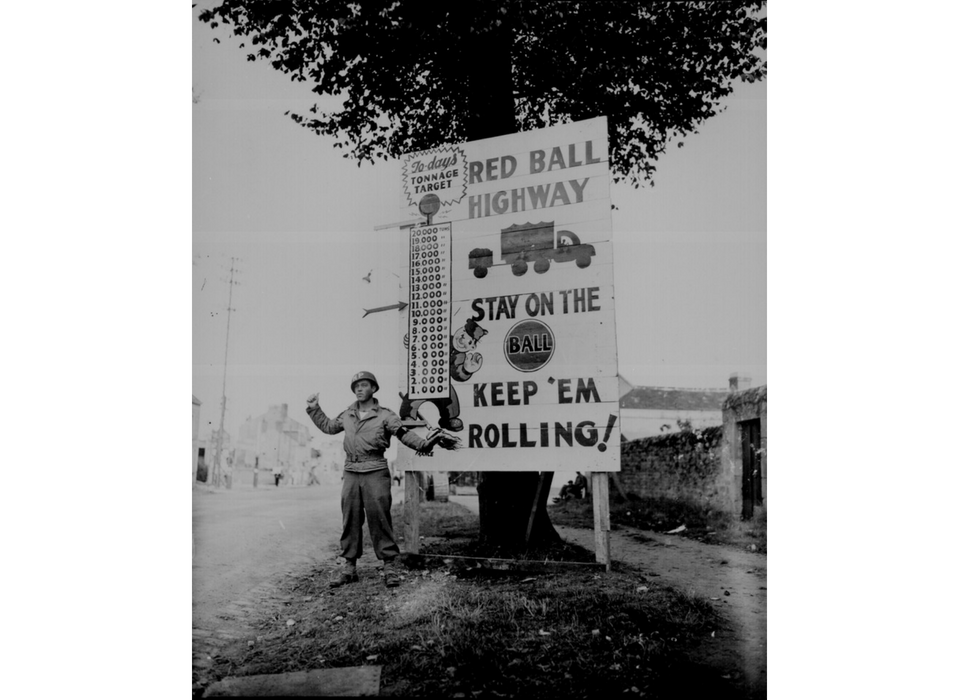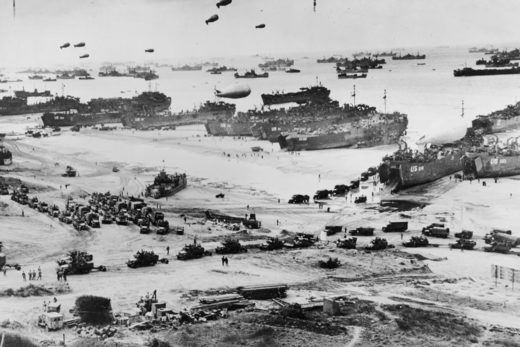"Scenes of savagery and bestiality desolate our countryside. Between the looting, the raping and the killing, all sense of security has disappeared from ours homes and on our streets. It's a veritable nightmare that sows terror. The exasperation of the population is at its height."On October 17, 1944, four and a half months after the Normandy landings, La Presse cherbourgeoise, a local newspaper in Cherbourg, published this warning under the headline 'Very Serious Warning'.
In the fall of '44, those who were plundering, raping and murdering were the Americans: the newspaper accused the liberators of behaving like soldiers in a conquered country. How was there such a paradox two months after the end of the fighting in Normandy?
Once liberated, the peninsula of Cotentin and its port became a gigantic logistics base. On the quays, a thousand American officers and sailors, together with the French dockers, ensured the daily landing of 10,000 tons of vehicles, ammunition and food. On September 29, 1944, 1,318 General Motors trucks leaving Cherbourg sent 8,000 tons of equipment to Allied troops on the front line. For several kilometers along the 'Red Ball Highway Express' - the road to the front - were hospitals, depots, airfields, rest camps, repair stations for tanks and trucks.
The warehouses in Cotentin housed a large number of soldiers: the 430,000 inhabitants of the Manche department coexisted with 120,000 American soldiers, including 50,000 African-Americans. From the outset, this cohabitation, which lasted until 1946, did not go well: "The enthusiasm of the Normands for Anglo-American forces may be inversely proportional to the length of our stay in Normandy," warned the 1st US Army in the summer of 1944.
First casualties
Author of the book American Normandy, the fruit of numerous testimonies and closely-studied archives in the United States, the historian Stéphane Lamache, 52, highlights the clash between the New World and old Europe:
"On one side, young Americans who were very self-confident, richly endowed with modern equipment, both in terms vehicles and means of communications already miniaturized. An America at the top of its history. On the opposite side were Norman families reminiscent of Maupassant with peasant hoofs, houses with dirt floors and horses pulling plows. After four years of occupation and the shock of bombing, the Normands had lost their bearings. "The liberation was paid in the price of blood and massive destruction in the region: 4,000 civilian deaths, twice as many wounded, 10,000 homes razed, 50,000 others damaged, 130,000 victims left with nothing. "After this cataclysm, the Normands aspire only to be rid of war. The Americans though were aiming for the final victory without concern for the mood of the inhabitants," notes Stéphane Lamache. The seeds of divorce were sown.
The first injuries were to self-esteem. The GIs, who organized balls in tents with a floor, set up tours in GM trucks to bring young local women into their tents. But there was no or little place for young Normand men. The Cherbourg stadium became an issue. After four months of negotiations, Tuesday and Thursday were reserved for Cherbourg footballers. One Tuesday in May 1945, a violent fight broke out between American baseball players, camping on the spot, and footballers who claimed the place. The Cherbourg press compared the liberators with the previous occupiers: "We can not say that relations [with the Germans] were cordial but they were correct."
At the start of the school year in 1945, the Allied Headquarters ('SHAEF', for Supreme Headquarters Allied Expeditionary Force) announced that it wanted to maintain detachments of the Military Police, which have been installed there since the Liberation, in several schools. "Now that we are at peace we can not tolerate the military imposing itself on the civilian population," said the mayor of Cherbourg, René Schmitt.
Accidents and aggression
Then came the financial and material quarrels. At the end of August 1944, the Americans employed 7,000 civilian workers for 75 francs a day and a military ration. "With 100 francs, the Germans paid better," said the workers. The TODT organization, in charge of constructing the 'Atlantic Wall', had not skimped on means. Soon, the French were replaced by German prisoners of war...
US stocks aroused envy. Too much envy. On August 6, 1944, thirteen dockers were arrested for stealing 984 packets of cigarettes and 188 soaps. The penalty: from fifteen days to one month in prison. Stealing a jerrycan of gas was worth four months in prison. The black market of the occupation continued: "Some could make a fortune at the Americans' expense," says Stéphane Lamache.
These multiple reciprocal annoyances might have remained inconsequential but for the noisy gunshots fired in the air by drunken soldiers - and especially the accidental deaths. Although military roads were forbidden to civilians, the number of victims of American trucks increased: an 8-year-old child was killed on August 27, 1944; a mother on September 11; a cyclist on September 30, to cite only a few.
The many accidents were reported carefully by La Presse cherbourgeoise, which was discreet about the violence and aggression by US troops. That is, until its "very serious warning" of October 17, 1944 about looting, rape and murder. The French general, Alphonse Juin, transmitted the article to General Eisenhower with this comment: "It is the feeling of all the inhabitants of Normandy in contact with Americans." But there would be no big reckoning.
Segregation
American authorities said they were "shocked by the crimes committed by colored soldiers," and responded in the same newspaper by declaring a "war on alcohol to stop crime." This was also a way to denounce the mercantile behavior of the locals, who were selling them brandy, and the ineffectiveness of the French public authorities. The first steps: a curfew was imposed at 10pm, then brought forward to 6pm, and the sale of alcohol to soldiers was forbidden. A cafe in Carentan that violated the ban was forcibly closed for six months.
In response to abuses against women, the US military justice hit hard: on November 23, three GIs were sentenced to death for the rape of two victims in July 1944, near Cherbourg. In August there were eighteen rapes. According to the gendarmerie, there were thirty-five in September and seven in October. In the countryside, no woman wanted to milk cows alone in the fields at night.
Author of Les Manchois dans la tourmente 1939-1945, historian Michel Boivin recorded 206 rapes by American soldiers. According to the Military Police, "80 to 85% of serious crimes (rape, murder) were committed by colored troops." The US military of the 1940s was, like the country, segregationist. In Cherbourg, there were two Red Cross centers: one for white soldiers, one for blacks. In its search for criminals, was the military police more understanding for the former than for the latter? The colored soldiers stationed in the logistics centers in the Cotentin area, a narrow territory, were there for long months, whereas the combatants only passed through it. The local gendarmerie had recommended the opening of brothels, but the US authorities opposed it.
The allies of 1944 are preparing to celebrate the 75th anniversary of the D-Day and its scenes of joy. Is not it time to talk about the darker episodes?
Translated by Sott.net






Meanwhile, in Italy, glorious French armies were delivering the country into the hands of the soldiary, with even harder and more brutal crimes, usually done in plain sight and front of family, men & elderies.
War stinx. No hero. We shouldn't celebrate any of this AT ALL.